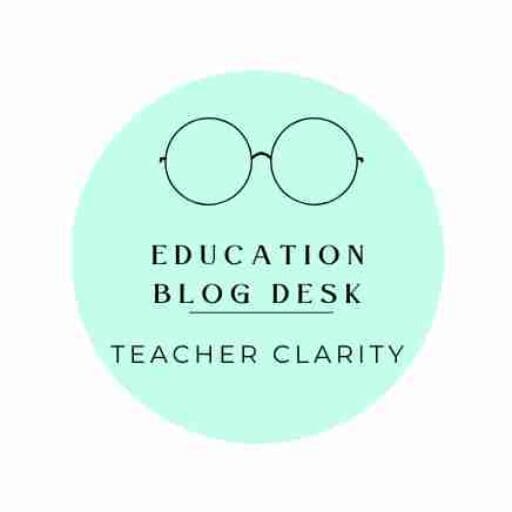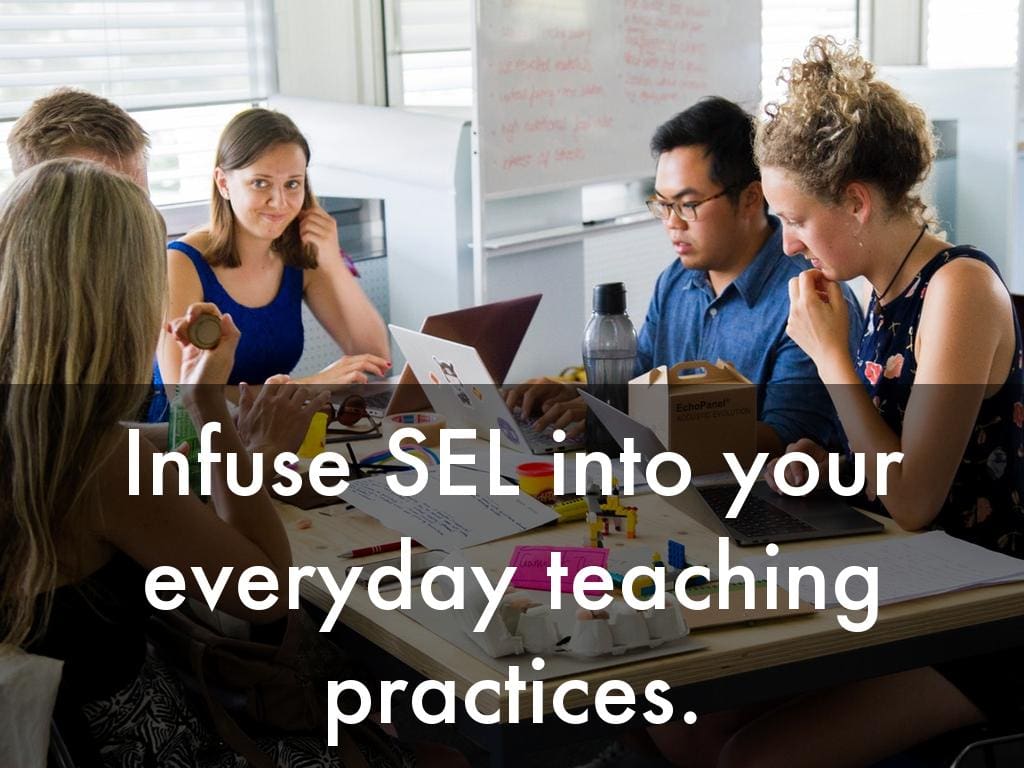
Planning SEL Lesson
Tracey A. Hulen and Ann-Bailey Lipsett share planning tools to support elementary teachers in providing authentic forms of SEL. Hulen and Lipsett ask how do we bridge knowing to actually doing? Authors believe the link that binds the two is often planning. Planning can help us reach our goals and be more efficient with our allotted instructional time.
In many ways, planning for social-emotional learning may look like planning academic content (language arts, mathematics, science, and social studies). Hulen and Lipsett believe it is best to teach social-emotional learning by means of our students’ daily social interactions with their teachers and peers, as well as helping students become cognizant of their own self-awareness and emotions. Also, it is beneficial to directly plan for and teach SEL skills and concepts during the school week, and weave the learning into each school day.
Authors use effective SEL approaches, which incorporate four elements represented by the acronym SAFE:
SEQUENCED: Connected and coordinated activities to foster skills development.
ACTIVE: Employing active forms of learning to help students master new skills and attitudes.
FOCUSED: Dedicated time and attention to developing personal and social skills.
EXPLICIT: Targeting specific social and emotional skills.
Among the strategies and tools Hulen and Lipsett provided, I want to highlight the integration of SEL and academic learning using weekly lesson-planning tools. I believe this would be useful for teachers to use.
Process of Unpacking Standards
Authors refer to weekly lesson planning as the process of unwrapping, unpacking, or deconstructing the standards. Hulen and Lipsett note this tool can help teachers identify what students need to understand and demonstrate, and then determine how learning might progress and build. It will also help teams generate ideas for teaching skills and concepts, and measure student growth through developmentally appropriate formative assessments.
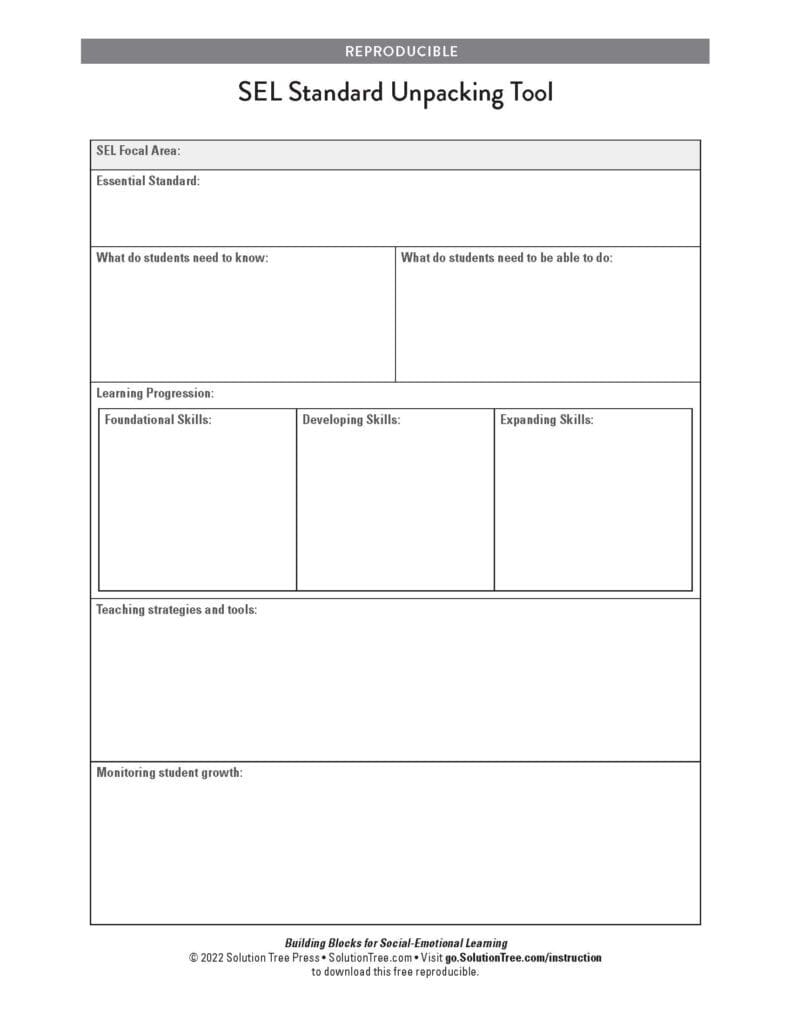
Teachers might find it most useful to use a tool like this before teaching a new unit of study. They can take time to understand the essential SEL standards they will teach during the unit of study. When they do this with their team, common understandings of what they need to teach and assess become a driving force for providing a guaranteed and viable curriculum.
The SEL standards in the weekly planning tool align with the SEL building blocks framework.
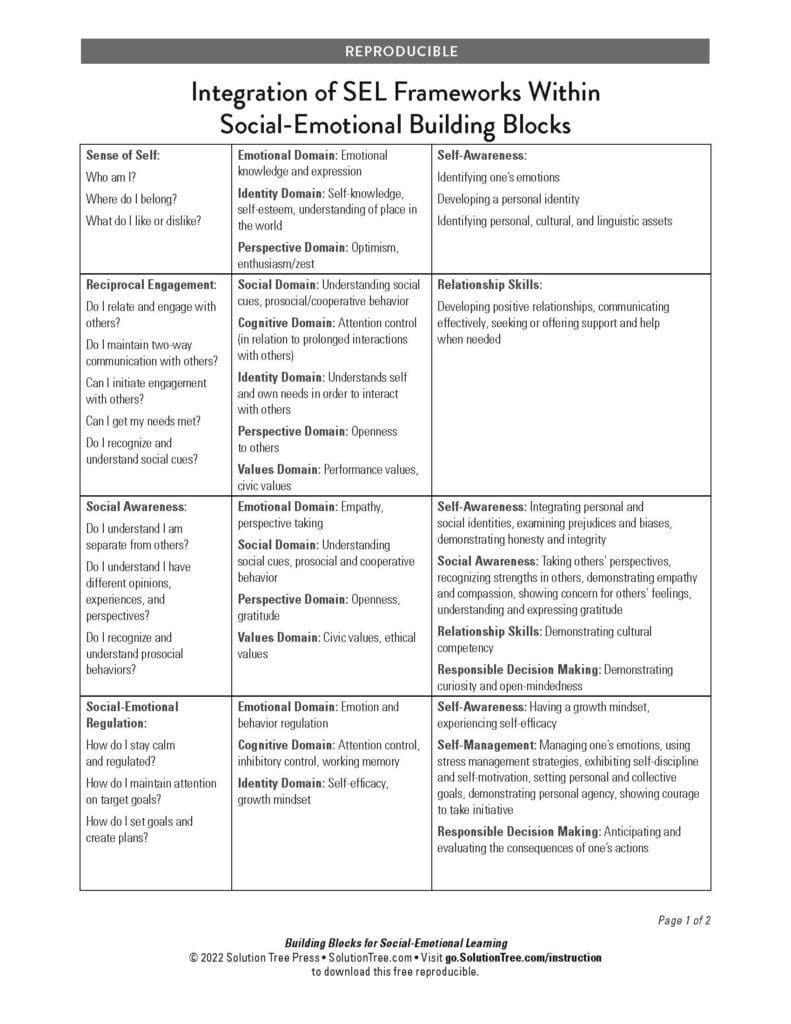
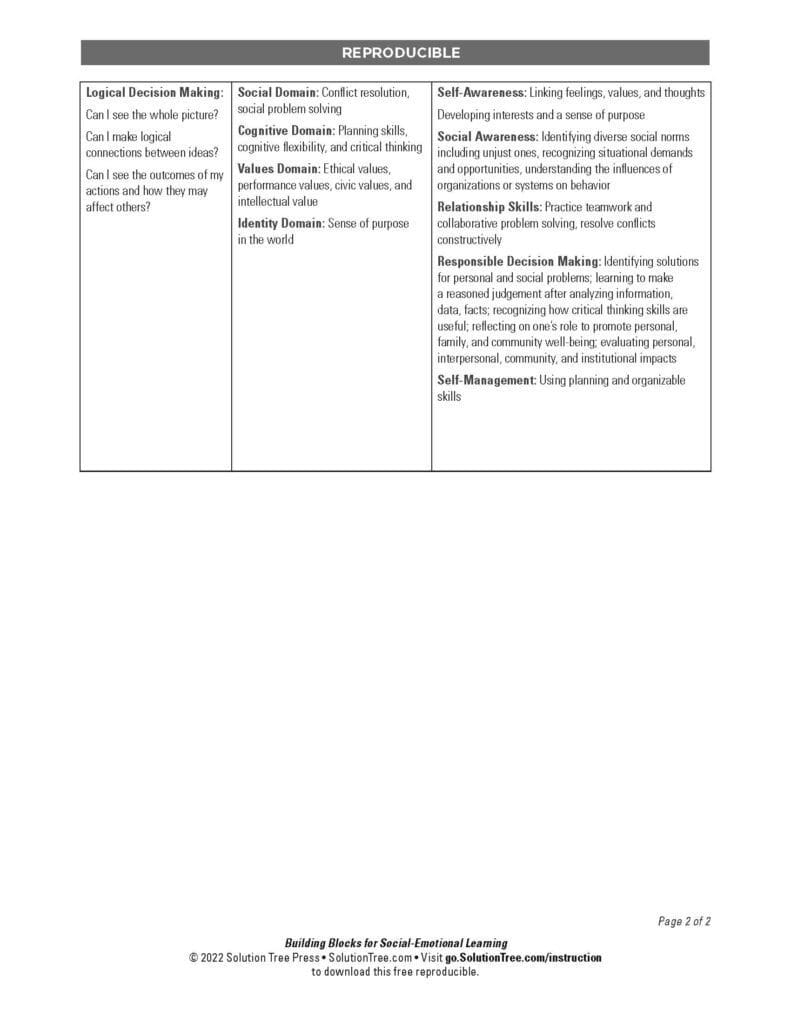
Authors caution educators not to skip any step in the weekly planning tool, because these pieces are key to ensuring that each member of the team understands the concepts being addressed, and that each individual teacher recognizes where the essential standard is important in connection with the greater picture.

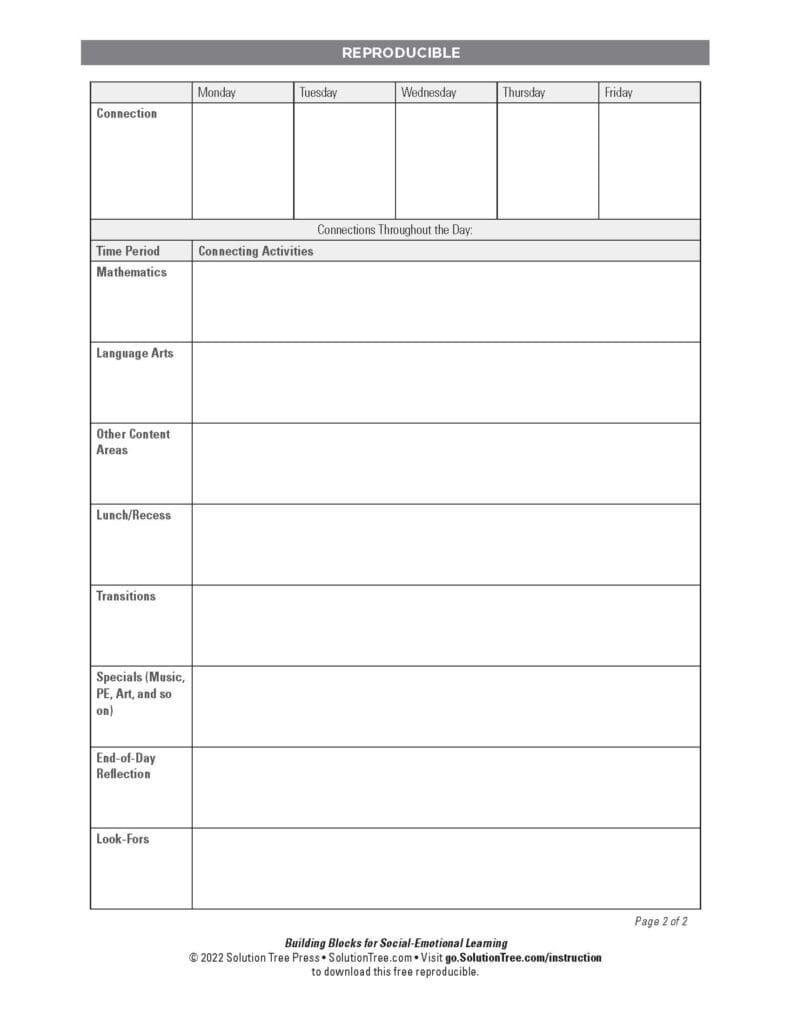
Hulen and Lipsett provide directions on how to use the SEL weekly planning tool:
To plan for the week using the SEL weekly planning tool, teachers note what they will directly teach each day regarding SEL, when they will teach it, and how they will connect that specific SEL skill to the broader school day. SEL skills are often not given a set block of academic time in the daily schedule. Like reading, writing, or mathematics, each teacher may choose to structure their SEL time with what works best for their classroom. After identifying when each teacher will teach the direct lessons, the planning tool provides space where the team can note how it will connect SEL learning to the rest of their day. This section of the planning document allows teams to identify which SEL connection (in mathematics, reading, recess, transitions, etc.) they will teach each day. The connection does not need to happen in every academic lesson during the week. Instead, teachers can be intentional in determining which day they will connect SEL to mathematics, recess, end-of-day routines, and so on.
The next step is for teachers and teams to complete the Connections Throughout the Day section found in the week-at-a-glance. Planning should include looking at each learning domain and individual subject area, and finding possible connections.
The following provides a list of suggestions by the authors:
- Mathematics may be an ideal time to review social awareness and reciprocal engagement building block components when working on games, or to review goal setting when looking at a more challenging topic.
- In mathematics, teachers can take time to support ideas around self-motivation, persistence, and goal setting, as students engage in rigorous problem solving.
- Already-planned read-aloud in language arts may easily lend themselves to a question or two that connect with the SEL curriculum, or it may be natural to connect a reflective writing assignment to standards within the sense of self building block.
- Science may lend itself to observations of the world around us, or to social awareness, goal setting, sense of self, and our five senses.
- Social studies can be connected to the study of different cultures, stories of famous figures fulfilling their goals, or historical problems that could have been solved with better reciprocal engagement.
Authors note that the SEL weekly planning tool also includes connection opportunities at recess, lunch, and specials. SEL cannot be completed in a vacuum (Burt & Whitney, 2018), and many lessons will not resonate unless teachers can connect the SEL skill with the soccer game at recess that ended in tears, or take a moment before and after lunch to challenge students to consider how they responded to their peers’ conversations as they ate.
In addition, each team should plan for an end-of-day reflection that will allow students to review and reflect on how their social-emotional capacity was that day. Are they proud of what they achieved? Do they see areas where they can make improvements tomorrow?
Finally, teams note the teachable moments they should look for that week at the end of the planning for the week. These may include friendly language during partner game play, or a disagreement over a game that a teacher can use to turn into a lesson on the exact SEL topic for that week.
Second Grade Example of SEL Weekly Planning

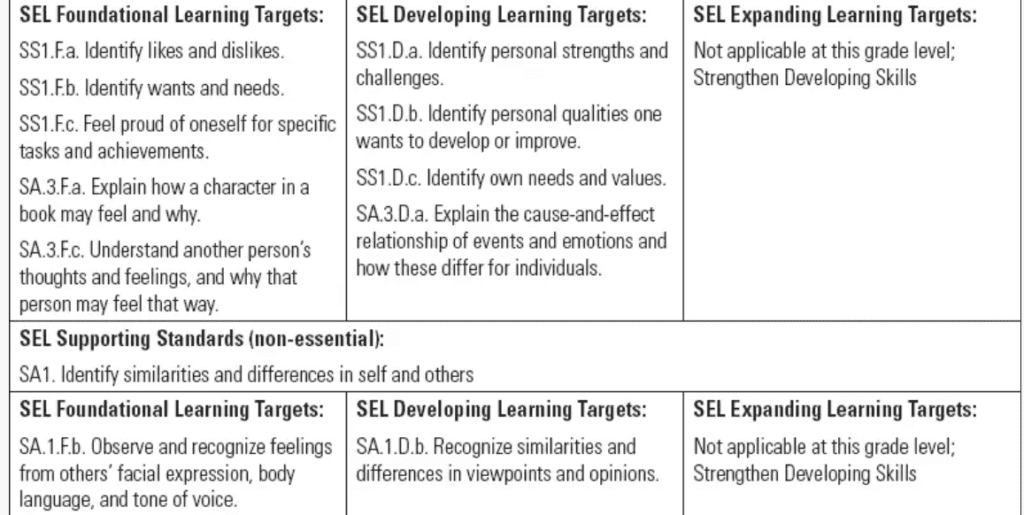
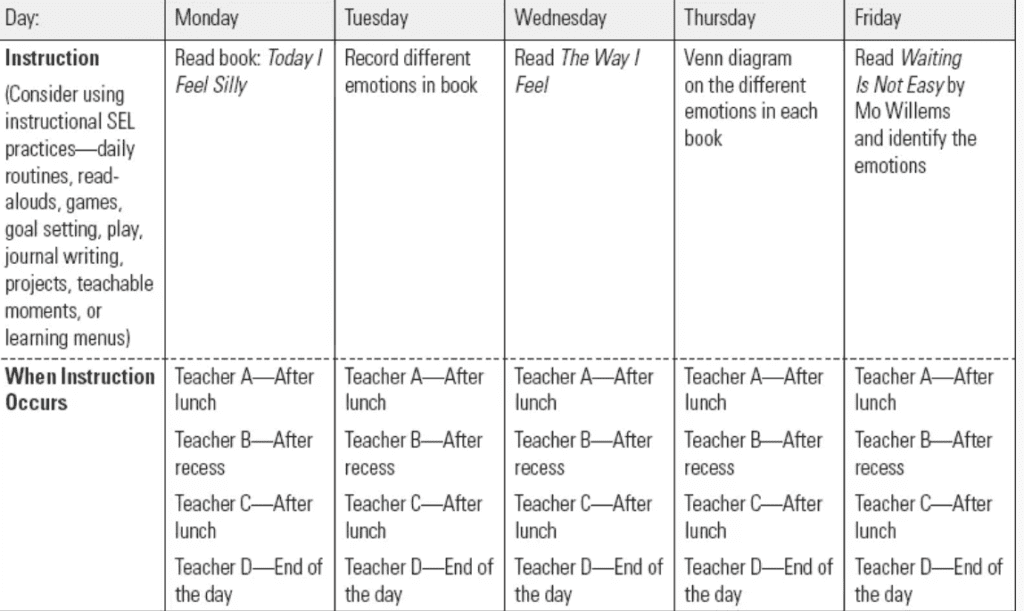
Final Thought
I have not done this kind of SEL lesson planning when I was teaching. SEL was separate from the academic skills and treated like its own program. I research SEL using books and articles. The common theme is to integrate SEL into the curriculum. You can find more information on my Building Social Emotional Learning Block page.
